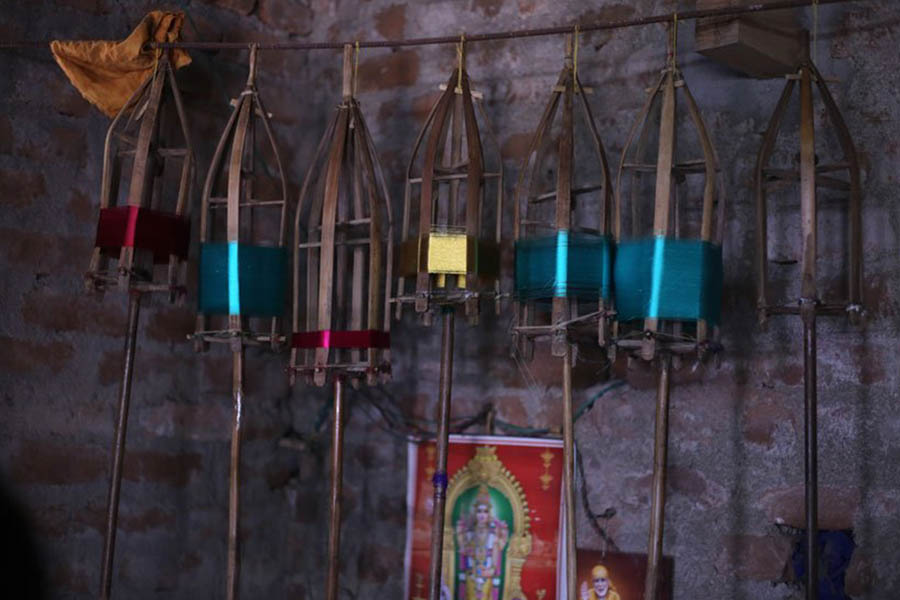Tracing Our Handloom Heritage
Baft Hawa, Shabnam, Ahrawan.
Poetic words, aren’t they? What do they mean? Woven air, morning dew and running water!
These were the words said to have been used by the poets of the Mughal durbar to describe the fineness of the Indian muslin. Well, not only the muslin, but other varieties of Indian handlooms too have won the hearts of many since time immemorial.
Ancient Indian handlooms were known for their rich techniques, fine thread count, exclusive motifs, vibrant colours, intricate detailing and elaborate workmanship. Explorer Marco Polo compared the finesse of Indian fabrics to the delicate weave of the spider’s web. It is said that the hand-printed textiles of Masulipatnam were so perfectly hued that they appeared like a fine embroidery. Roman emperors treasured Indian cotton, while muslin was greatly admired in Babylon. Even today, Indian handlooms, be it cotton or silk, are much sought after by people around the world.
From the Ikats of Orissa and the Kanjivarams of Tamil Nadu to Ilkal in Karnataka and Muga in Assam, our country is home to an enviable array of handloom fabrics and weaving techniques that are perhaps as ancient as our civilisation itself.
History of handlooms
Traditional handloom weaving is one of the oldest family-based industries in our country. The history of handlooms and handwoven fabrics in India dates as far back as the Indus Valley Civilisation. Excavations in Mohenjodaro led to the discovery of spindles and terracotta spindle whorls, which proved that early inhabitants of the civilisation knew to grow cotton, spin and weave. They also seemed to know the art of madder dyeing Manjistha) as is evident from the fragment of madder dyed cotton woven into a coarse plain weave.
Weaving skills and spinning materials also find mention in Rig Veda, Ramayana and Mahabharata. In fact, spinning, weaving and dyeing techniques were said to be advanced during the Vedic period. The Vedas and Puranas talk about the exquisite fabrics worn by the gods, goddesses, royalty and common people too.
The cotton spinners and weavers of Kashi have been spoken about in Buddhist literature. It is believed that the fabric made by them was so fine that even oil couldn’t penetrate the cloth! Cotton cloth made in Kashi was used to wrap the body of the Buddha when he attained nirvana.
Silk was considered a symbol of royalty in ancient India and used in religious rituals and ceremonies. There are references to tied-and-dyed and multi-coloured silk fabrics (similar to Patolas of Gujarat) in Buddhist texts. The first Indian silk was spun around 1725 BC from the cocoons of Tussah, Eri and Muga moths.
A story goes that Alexander the Great was so captivated by our weaving skills that he took back with him some of the fine Indian silk.
Rise, fall and revival
Handlooms flourished during the rule of the Pathan rulers and the Mughal emperors. Towards the end of the 18th century, with the onset of the Industrial Revolution, there was a period of decline. Later, the famines of the 19th century, the British raj, and the world wars adversely affected the Indian handloom sector. But the period of British supremacy in India gave rise to the handspun khadi movement in the country. The post-independence period saw government thrust in the form of policy changes and cooperative societies to revive the age-old weaving clusters of the country.




